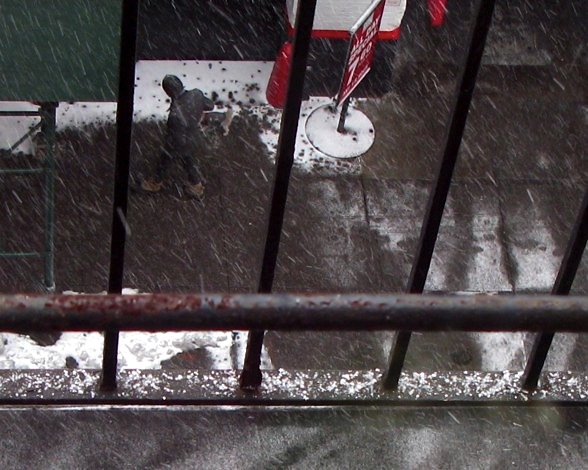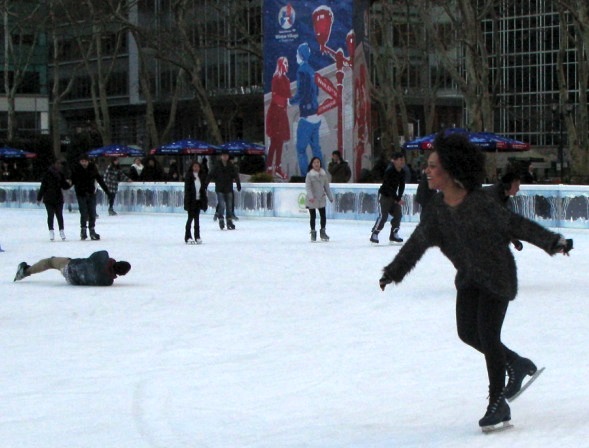This post is in honor of the movie Selma, which I saw last night. I know there has been criticism about the portrayal of LBJ, but after reading the back and forth I side with the filmmaker. To represent everything everyone did to contribute to this incredible chapter in history would have taken a week long documentary. Also, I don’t think LBJ is represented as a villain. I think he comes off like a president who has to juggle many issues and needs and emerges a hero.
The following is taken from the Mayor’s collection at the Municipal Archives, Mayor Fiorello H. LaGuardia Subject Files, Harlem Survey Complaints, Roll 83.
The year is 1935 and America was in the midst of the great Depression. On March 19 a black sixteen year old named Lino Rivera had been caught stealing a pen knife from a five and dime. When he subsequently disappeared and the police failed to communicate what had happened to him, and whether he was alive or dead, violence erupted. This had already been a bad year for young black men in Harlem and the citizens were right to be concerned. Although the boy had actually escaped all harm, an unarmed sixteen year old high school student named Lloyd Hobbs was shot and killed by the police later that evening, along with two other men, with many more wounded as well.
When the Grand Juries declined to indict the police officers in four cases of possible misconduct that year, including those that had occurred during the riot, Mayor La Guardia ordered his own investigation. This is the investigator’s first memo.
To: The Sub-Committee on Crime and Police Treatment
From: James H. Tarter, Jr., Investigator
Subject: The Aiken’s Case
Thomas Aikens, a young Negro, 28 years of age, and who came from a respectable family was standing in a bread line in the 369th Infantry Armory Building on March 13, 1935 … Mr. Aikens placed himself in the line at about 10:30 in the morning … At about 1:30 in the afternoon, when the line had reached the point where he would have received his food, he was shoved a bit out of line by other men … At this point, two policemen, namely David Egan [Patrolman Egan, shield #9761, Precinct 32] and Eugene Cahill, came to him and, with abusive language, told him to go to the end of the line which now had increased to 800 men. Aikens protested, stating that he was out of line due to the constant pushing by the men and that he had a right to remain where he was, having been in line since 10:30 in the morning. With this protest he was labeled a ‘smart nigger’ and immediately was set upon by the two police officers who were assisted by another white man known as ‘Cap,’ and who is in charge of feeding the men who come to the Armory. Aikens was first struck in the mouth by a blunt instrument (baton) … someone struck him on the head again and again … he fell to the floor, unconscious, and he lay there nearly 30 minutes. Finally, he was dragged across the armory floor, and the policemen put in a call for the patrol wagon … someone else called for an ambulance … Aikens states that he could hear the policeman telling the ambulance surgeon to clean the blood from the face in order that he could be taken to the police station. The doctor is reported to have stated that the man (Aikens) was in serious condition, which necessitated his being taken to the hospital …
It would be interesting to note that the arresting officer displayed little interest in the injuries inflicted upon Aikens until the admitting physician informed him of Aikens’ serious condition. It is very evident that the arresting officer became aware of the necessity of erecting a defense, and this was done in the form of the charge of felonious assault by Aikens on the arresting officer. The following is a true and accurate transcript of the cowardly defense resorted to by the arresting officer [Aikens lost an eye as a result of the assault] …
“Arrested at 9 West 142nd Street, 369th Armory, charged with willfully and wrongfully striking officer on left side of face with clenched fist, while officer was attempting to arrest him for causing a disturbance, using loud and boisterous language, tending to excite several hundred men who were in line, possibly thereby tending to cause a riot. — Patrolman Egan #9761, Precinct 32″ …
The beating sustained by Aikens occurred on March 13th, and six days later (March 19th), the disturbance commonly called the Harlem Riot occurred and as a result, the Aikens case was one of the first to be called to the attention of the committee formed by the Mayor, later known as the Mayor’s Commission on Conditions in Harlem … The chairmen of the sub-committee asked Patrolman Egan if he wanted to testify. He replied by stating, “I do not wish to testify. Whatever testimony I would give would defeat the ends of justice.” …
It is unexplainably bad police work when two armed police officers cannot arrest an unarmed helpless citizen … In the Magistrate’s Court officer Egan testified that he suffered laceration of the mouth and several teeth were knocked out by the defendant, Aikens.
After making a diligent search of all the records in Harlem Hospital, no record was found which showed that the officer had been treated …
The Grand Jury, after hearing testimony of Mr. Aikens, dismissed the charge against him preferred by the officer, and refused to indict the officer on a counter charge. Mr. Aikens has instituted civil action against the officer and is asking $25,000 damages for the loss of his eye …
It is this worker’s belief that the atrocious treatment of Aikens by officer Egan and Cahill gives a cross section of the attitude of the police assigned to the Harlem area. It is unfortunate that the Grand Jury did not find a true bill against the offenders; the action of this Grand Jury may well be found to create two very serious problems, namely:
1. Encouragement to the police officers in this area to continue their brutal methods, with no fear as to the consequences.
2. An attitude on the part of the citizens of genuine antagonism towards police officers, this creating a feeling of insecurity which may terminate into a major crime waves, not against the citizens but against the police department.
To be continued …
I took this shot on the way home from seeing Selma last night. What kind of tree is this? It doesn’t look quite real.






